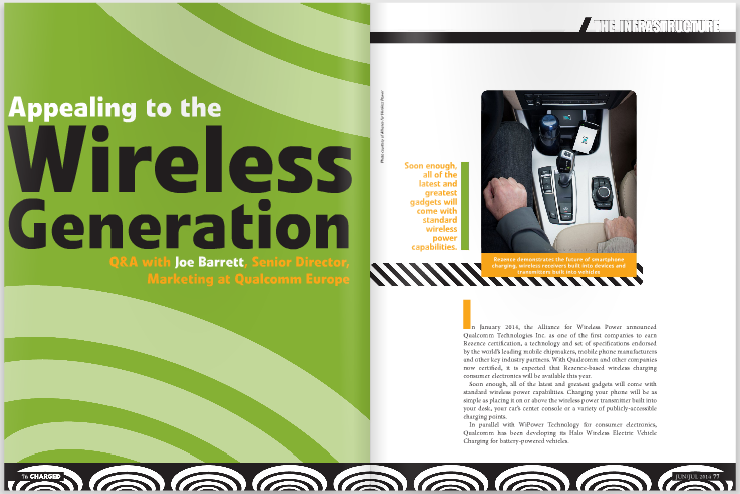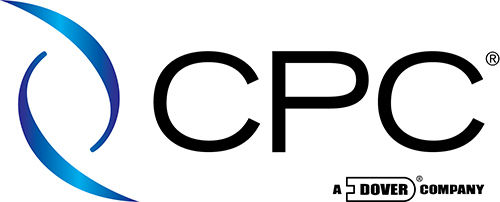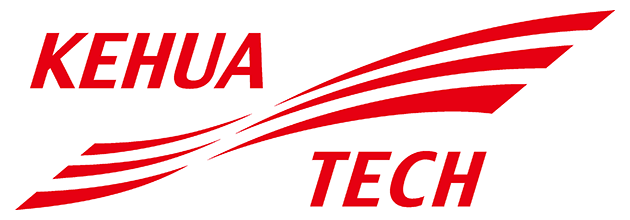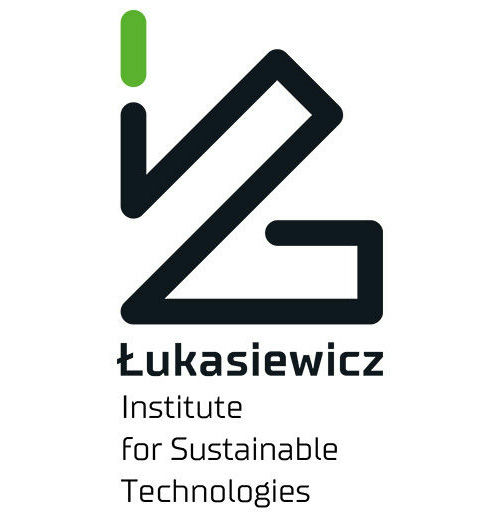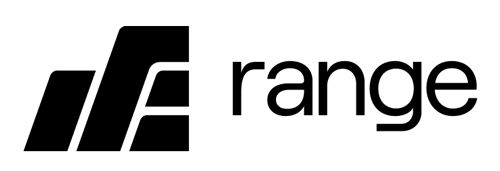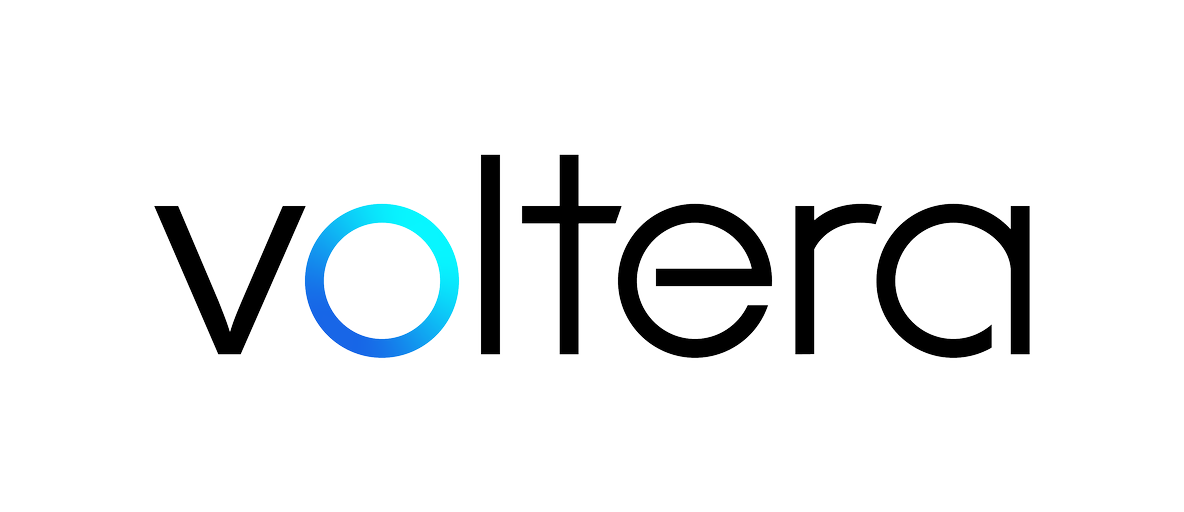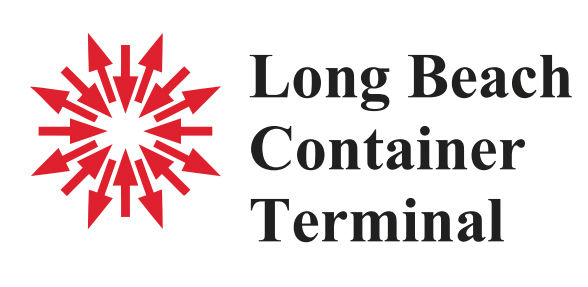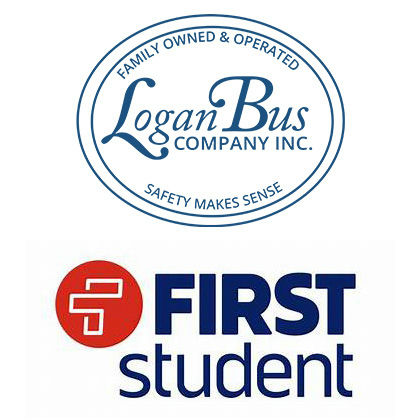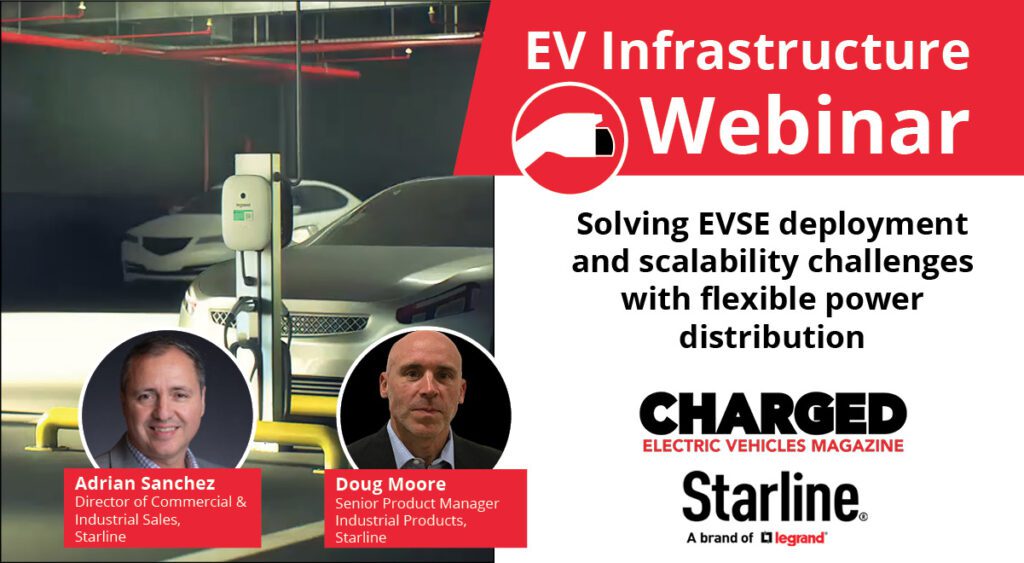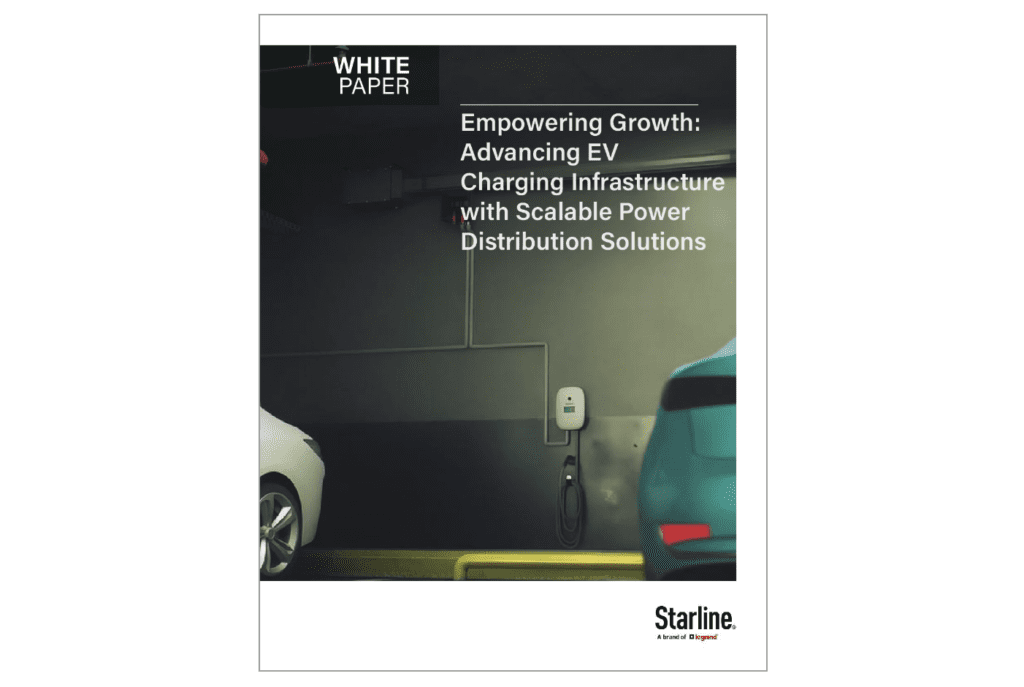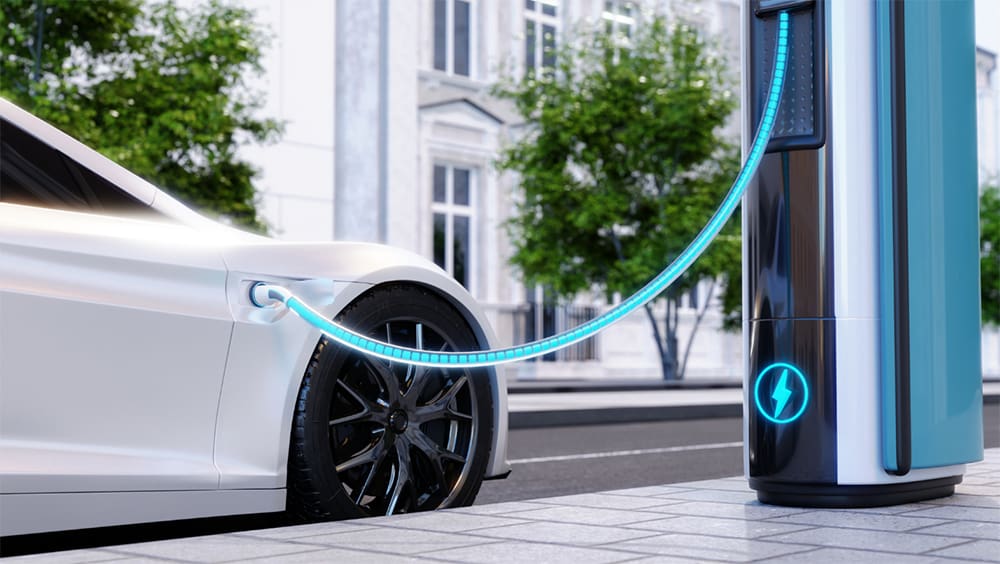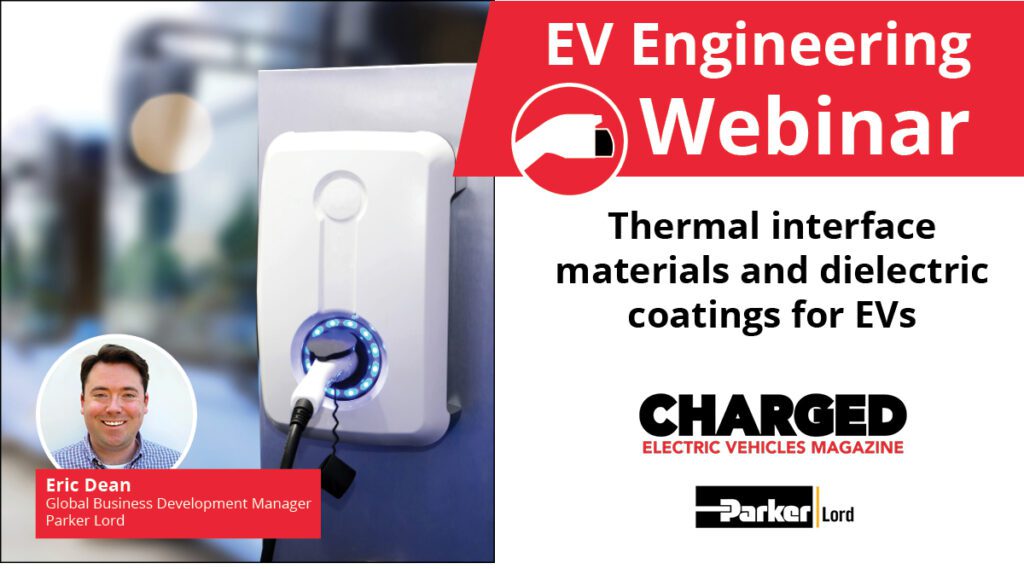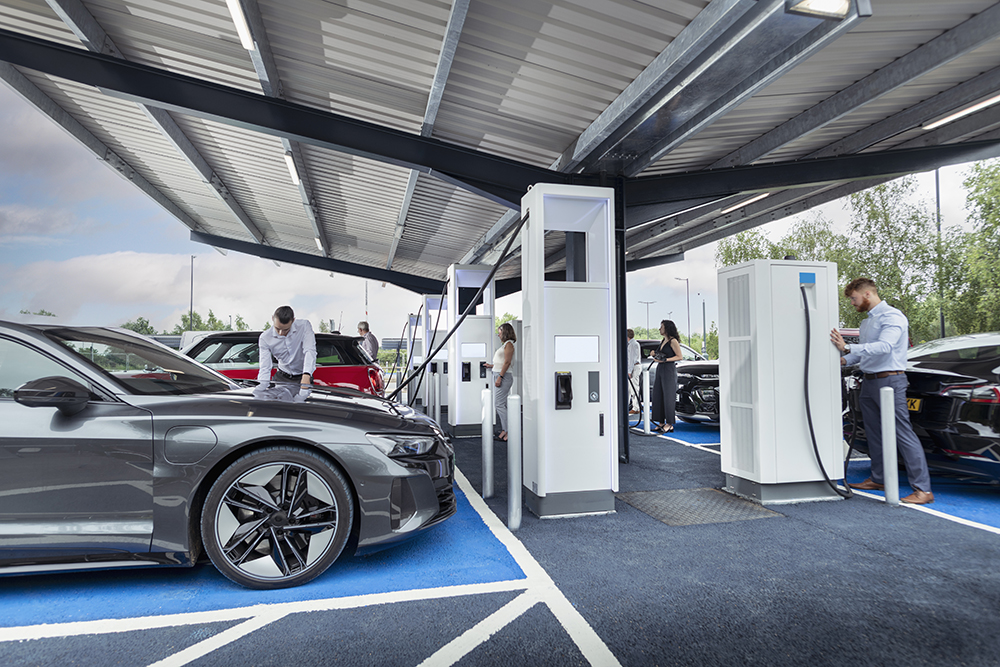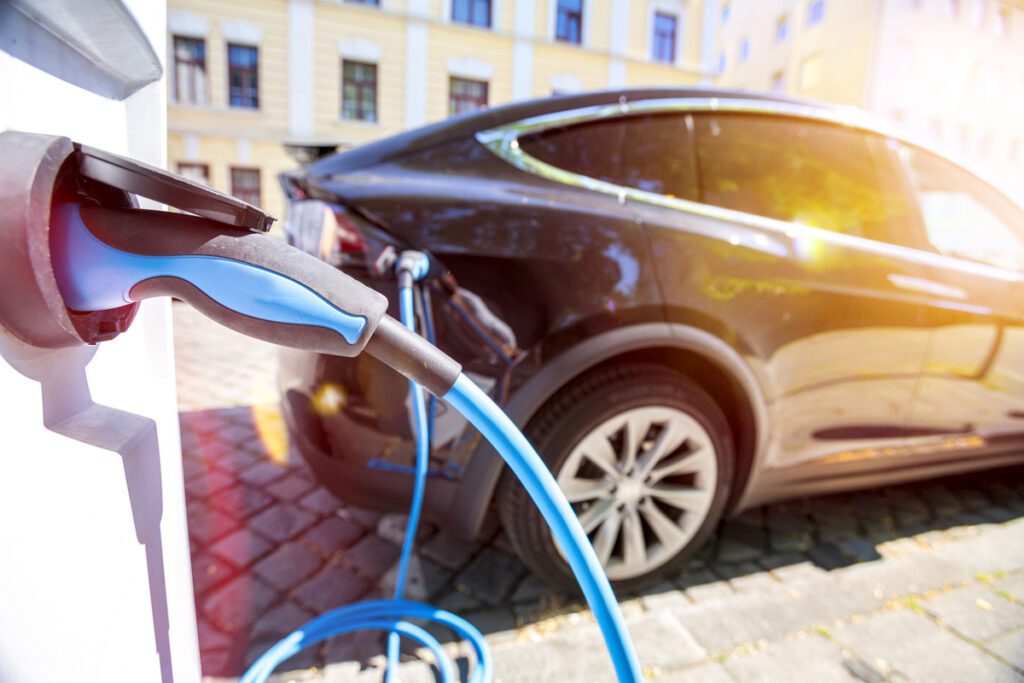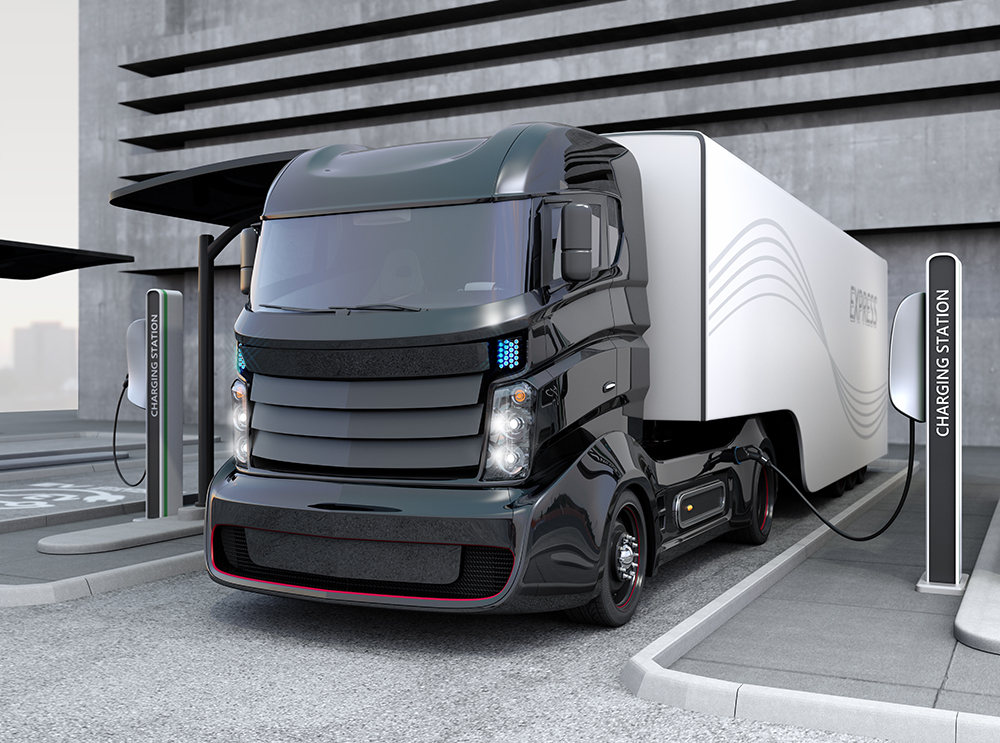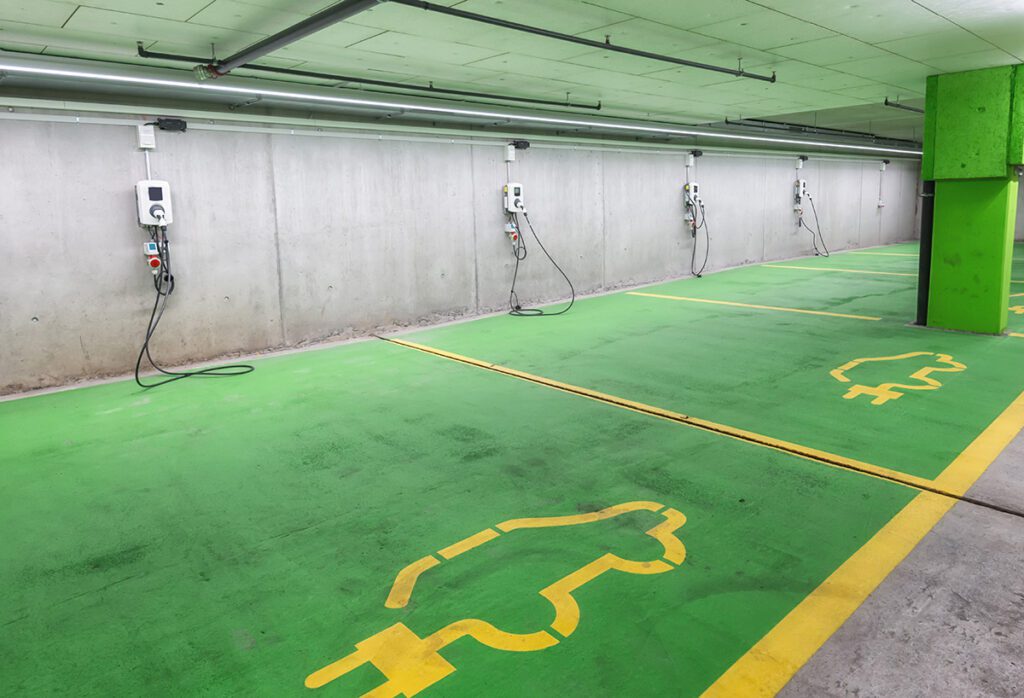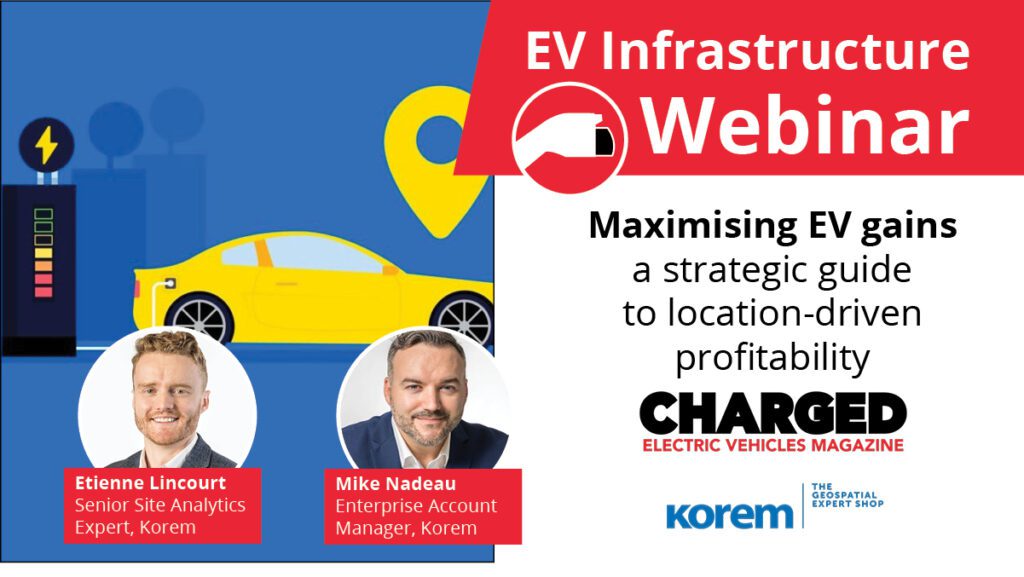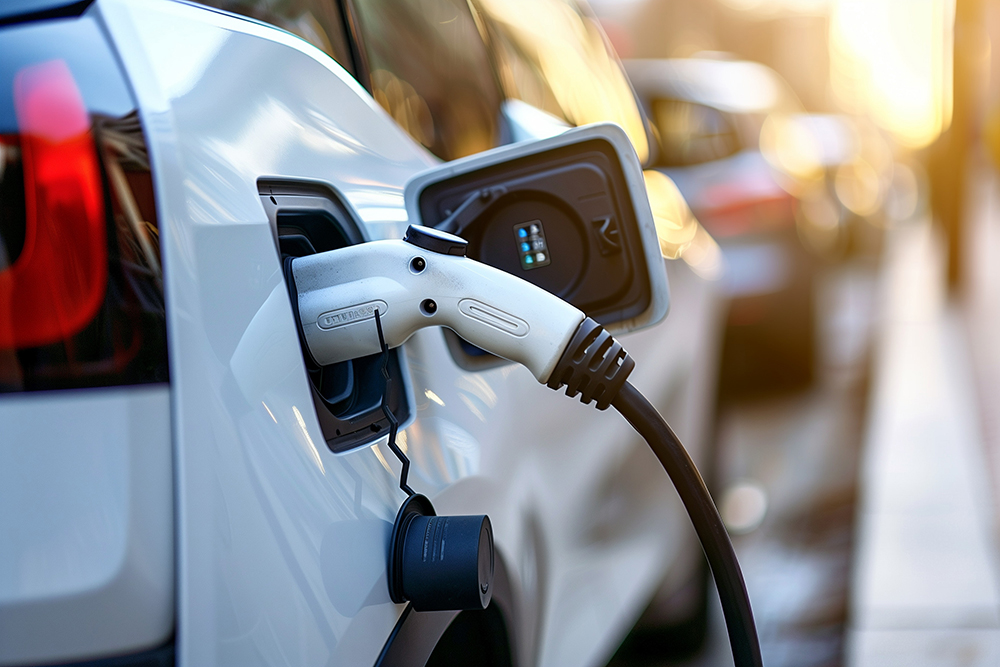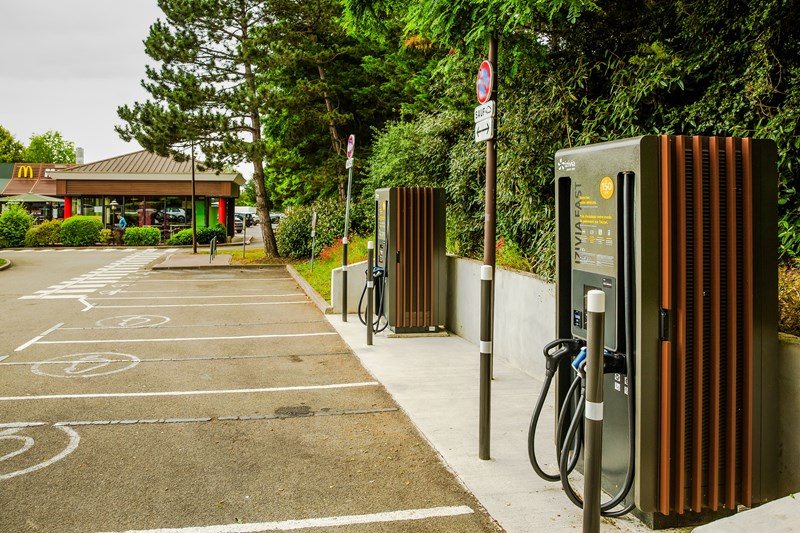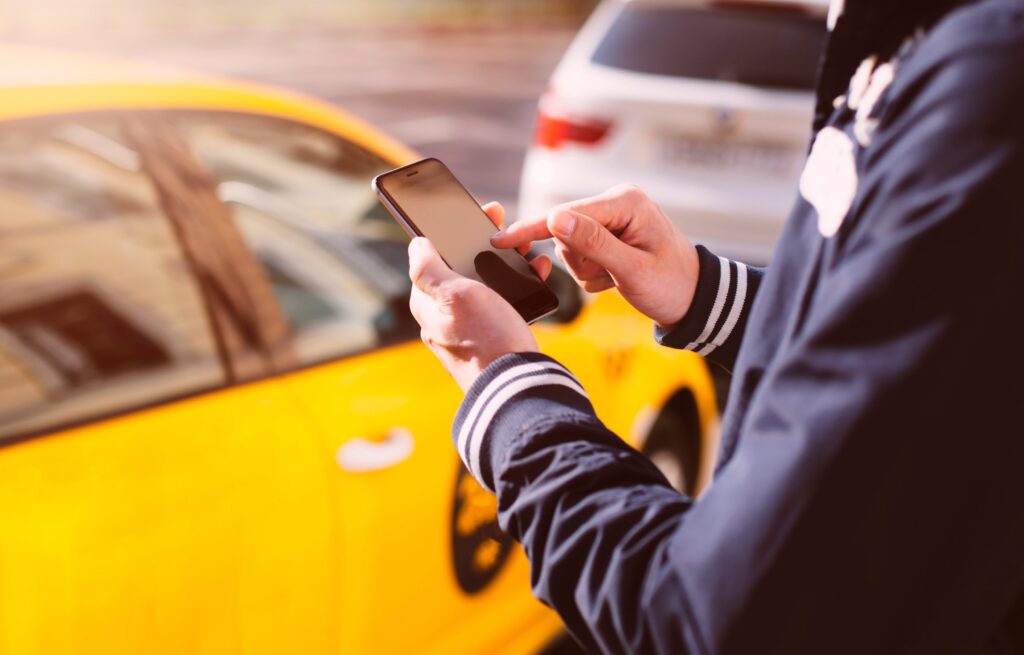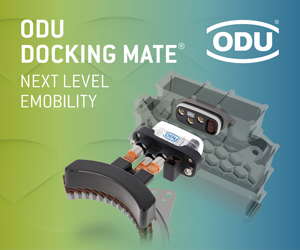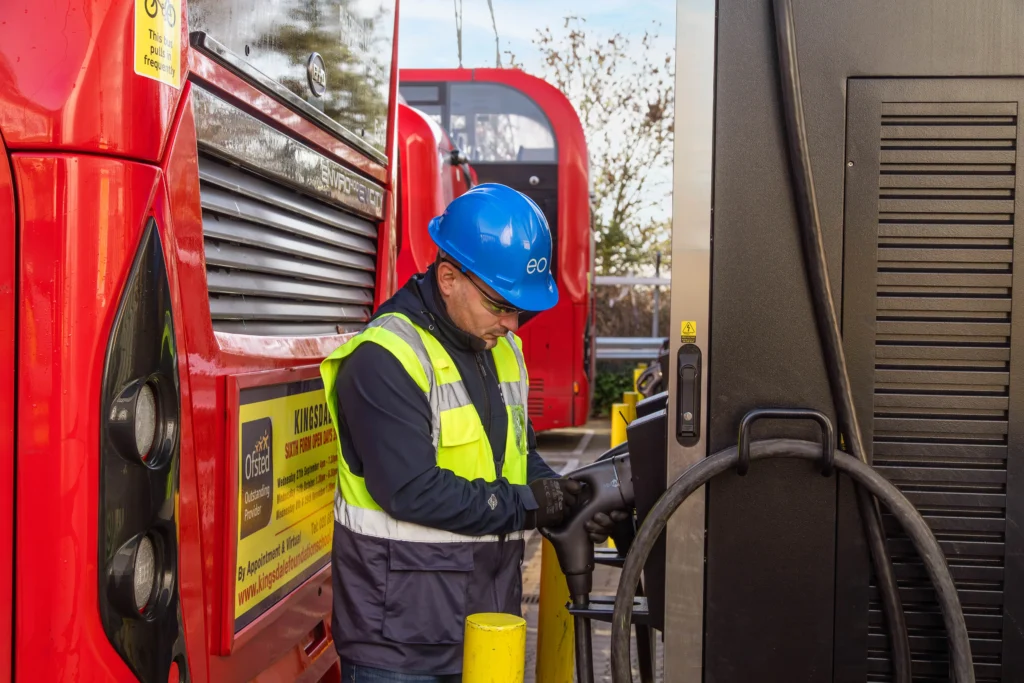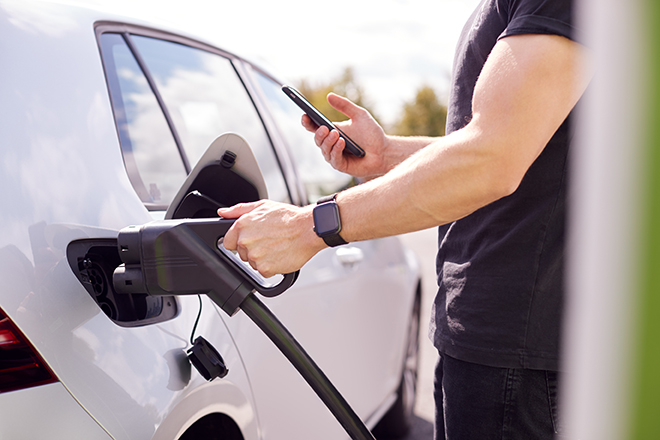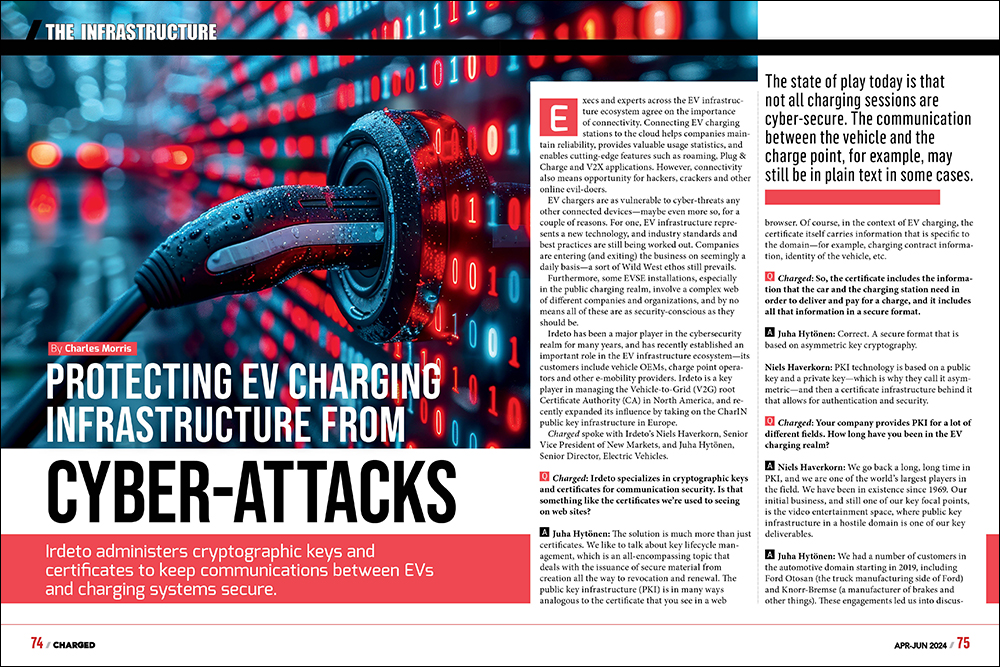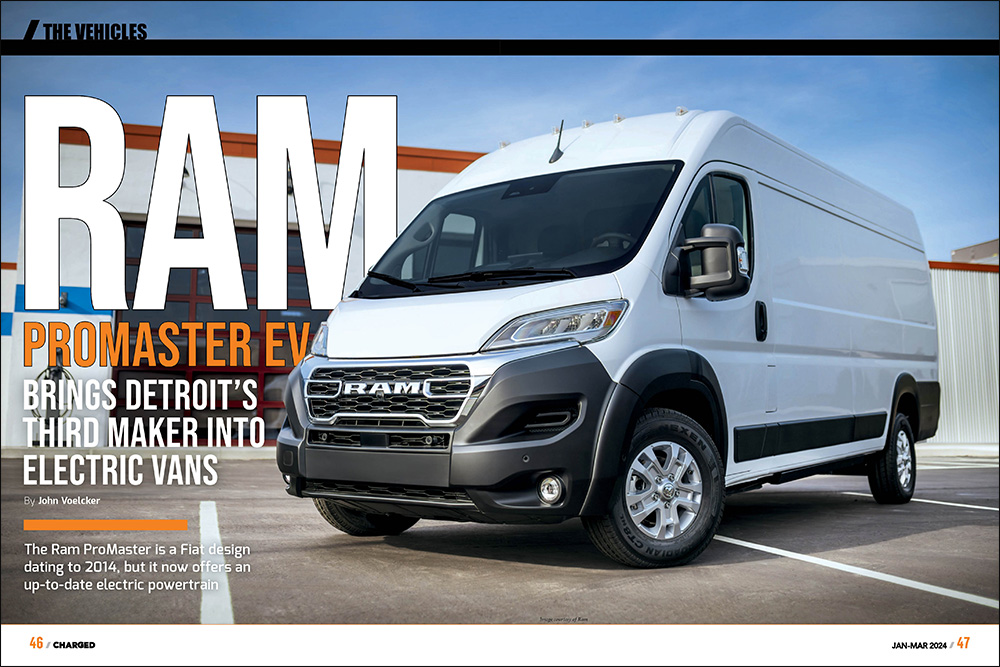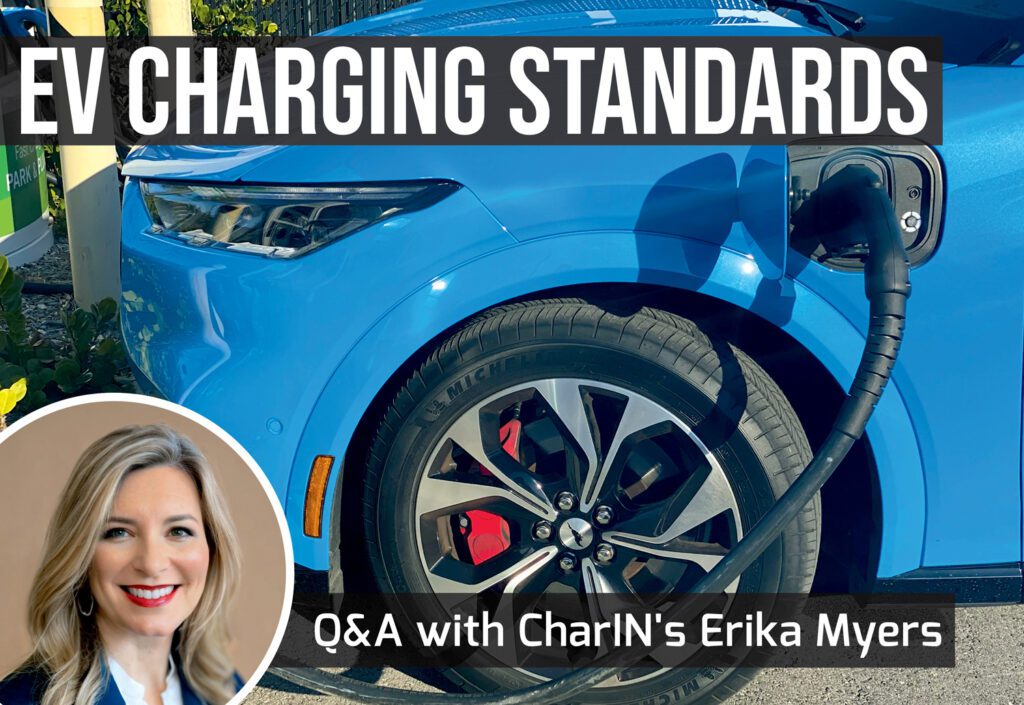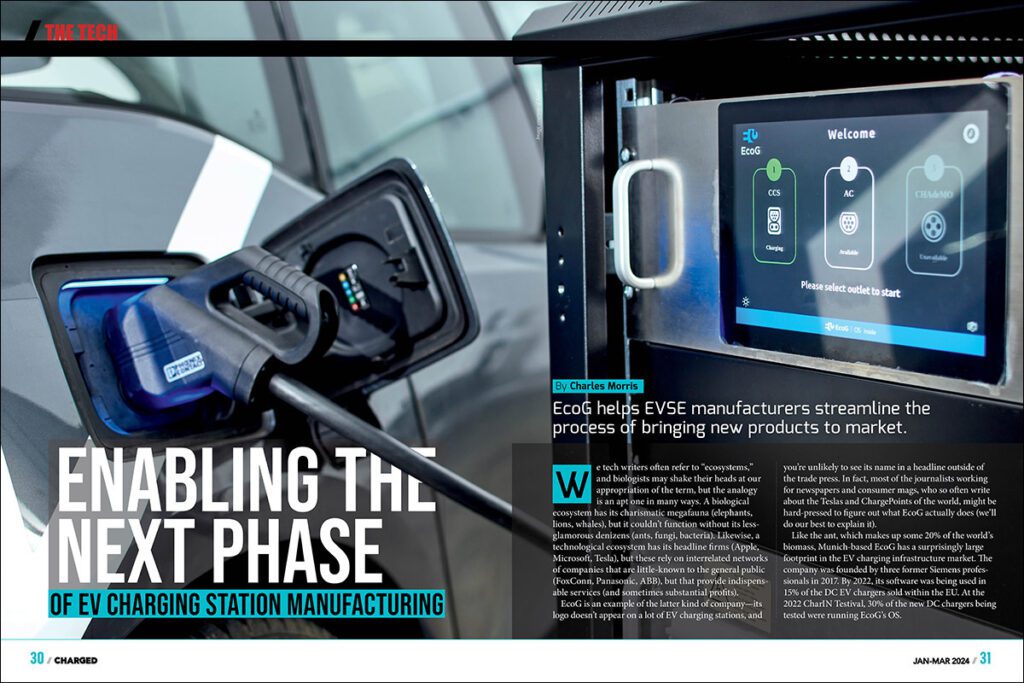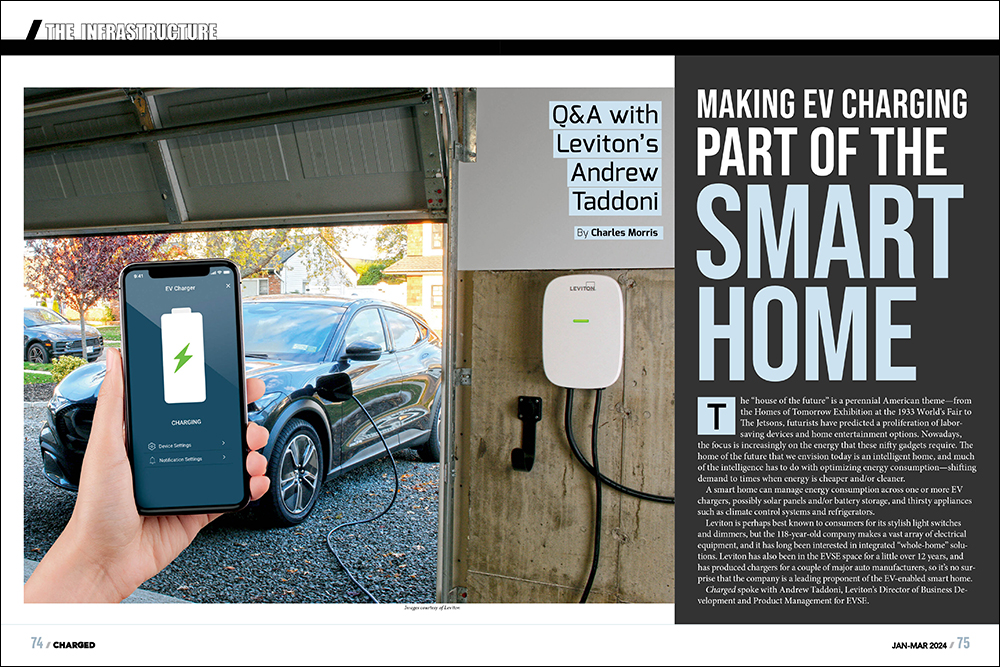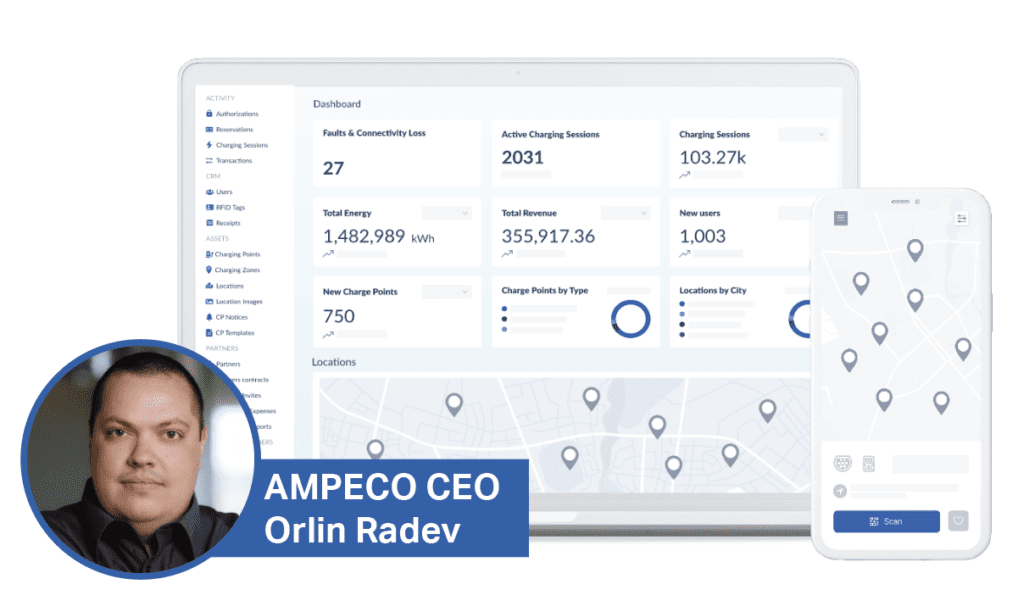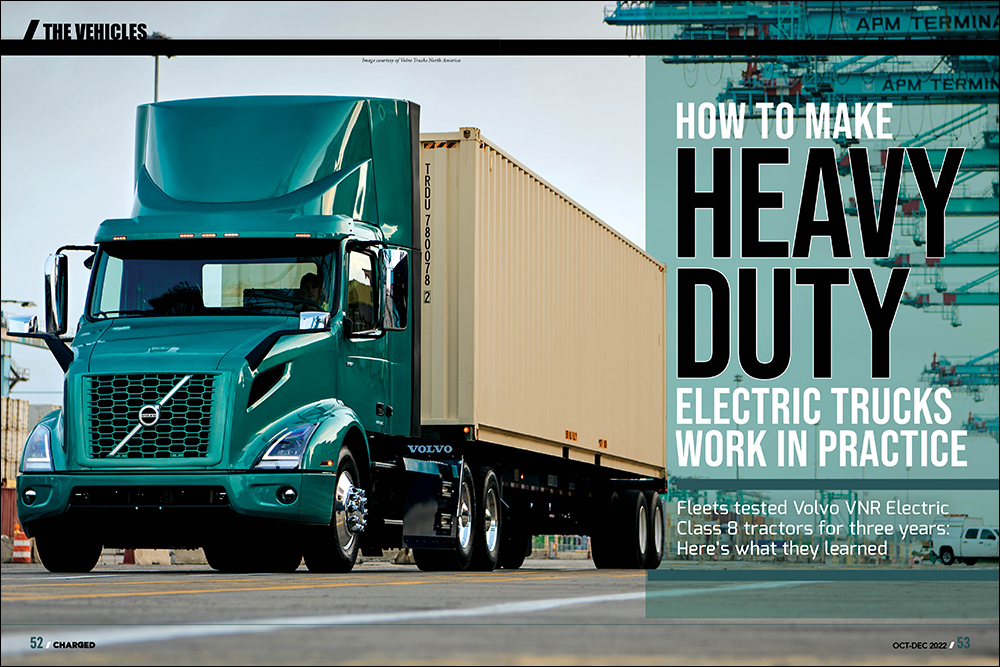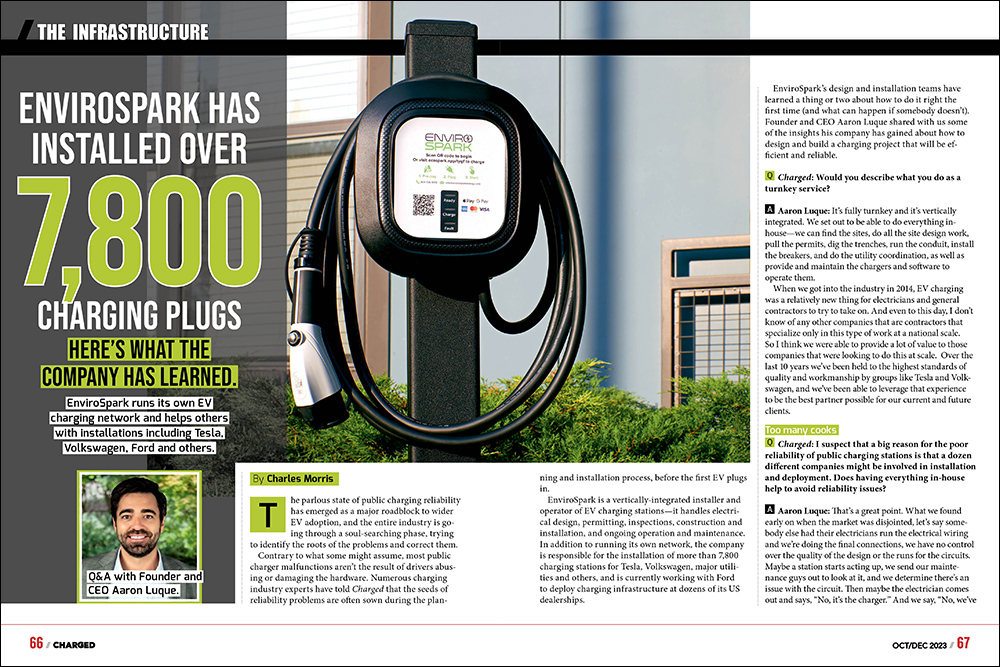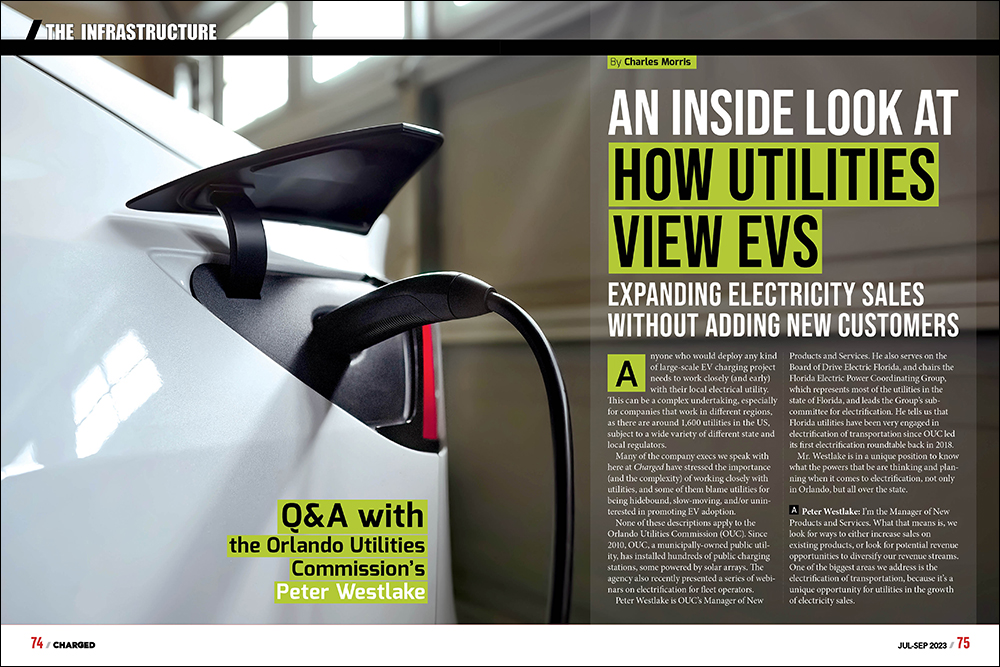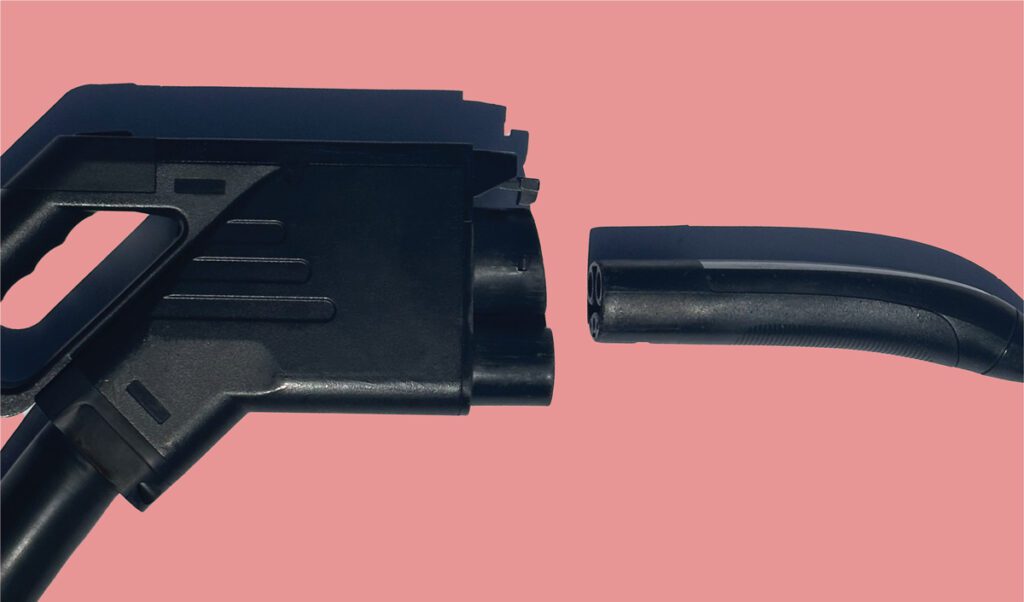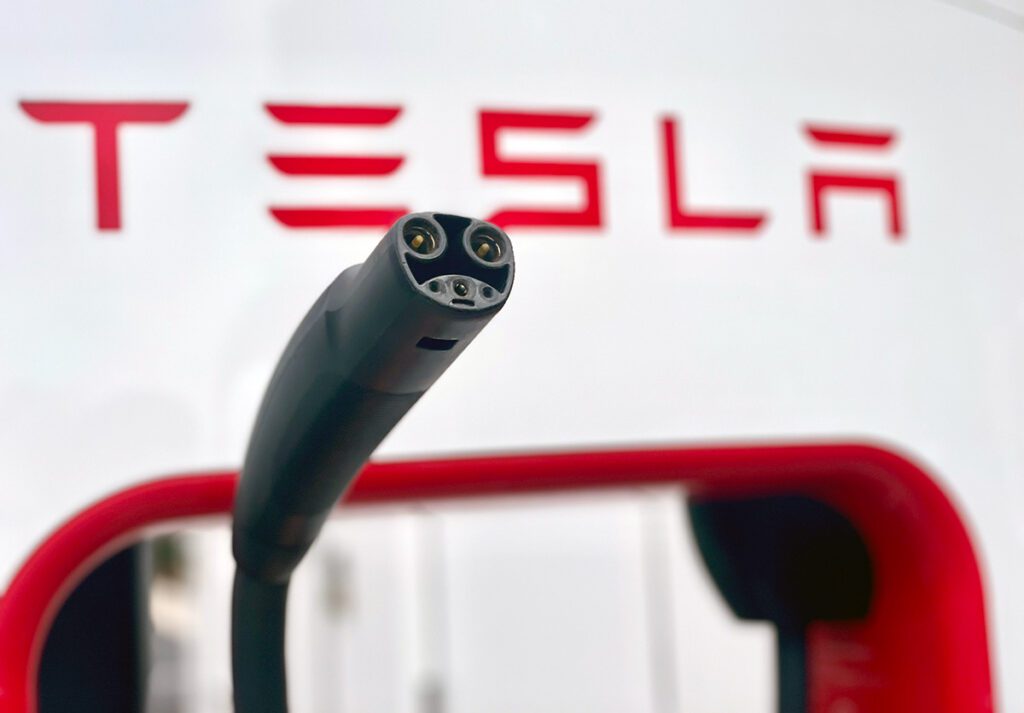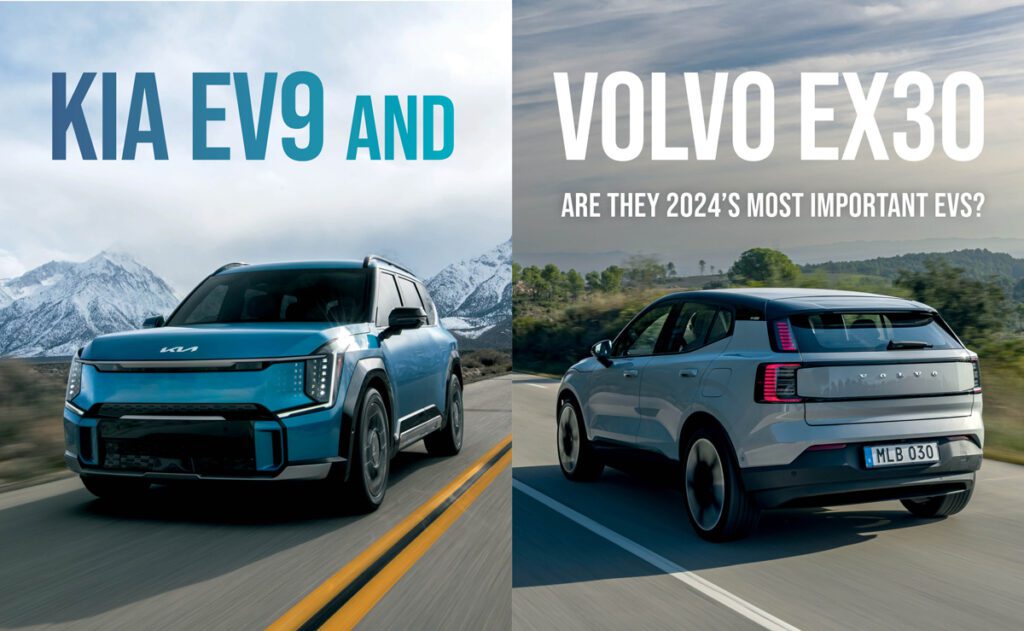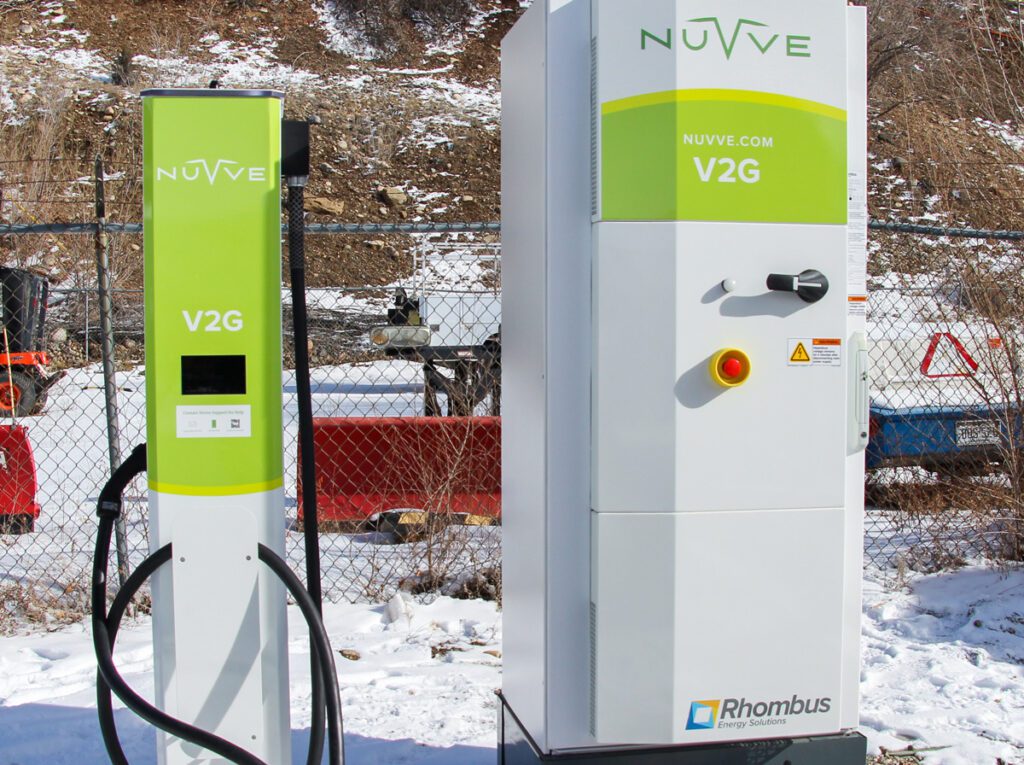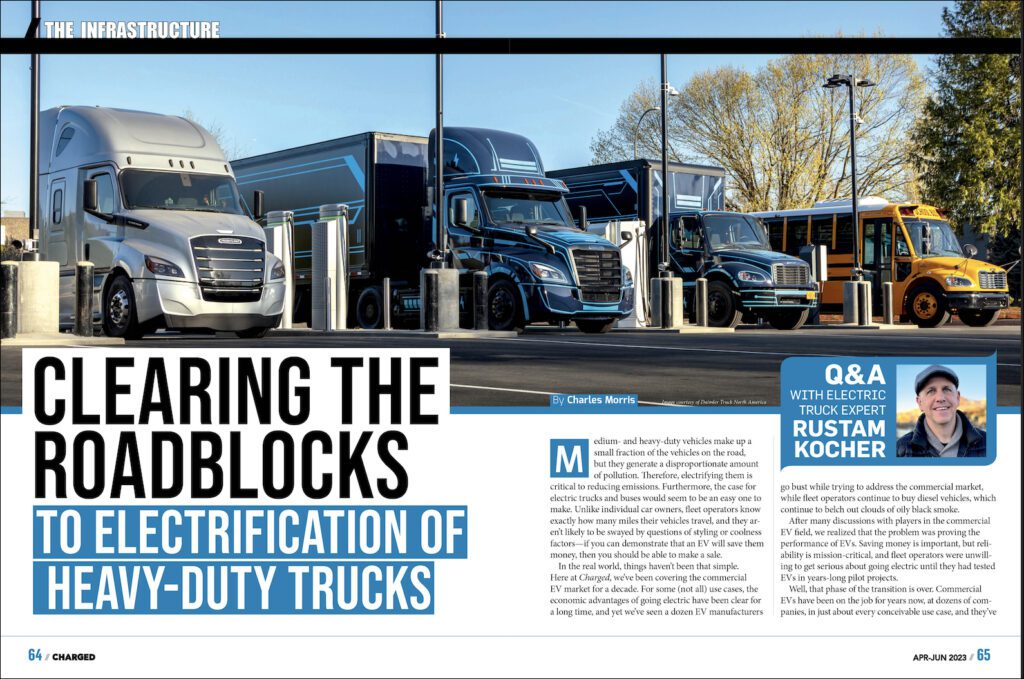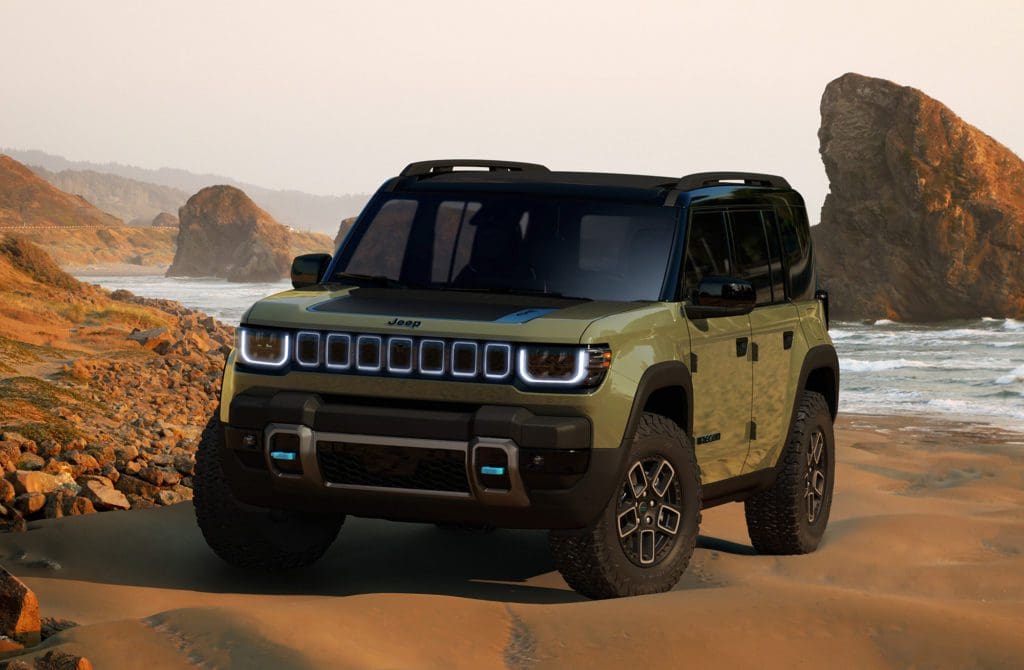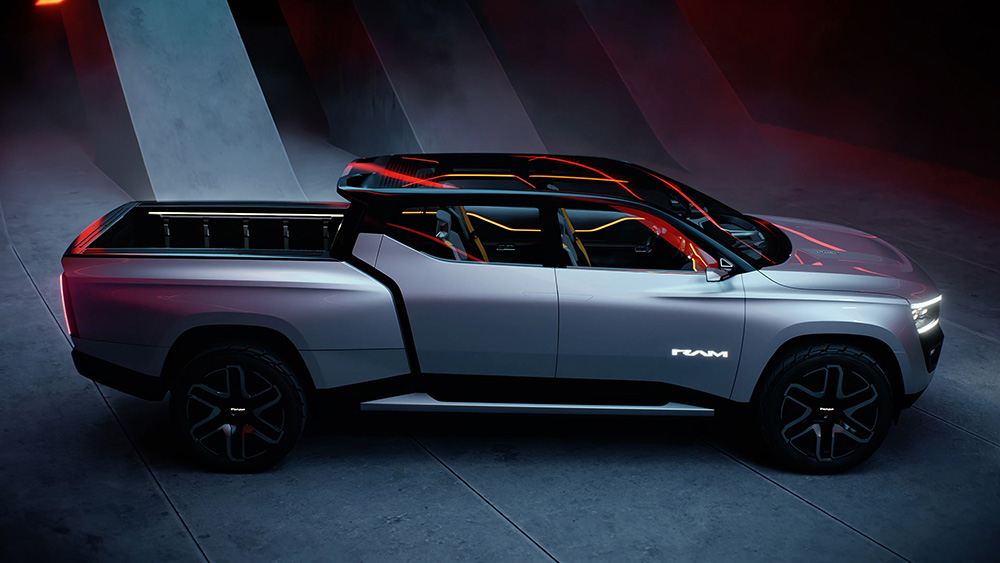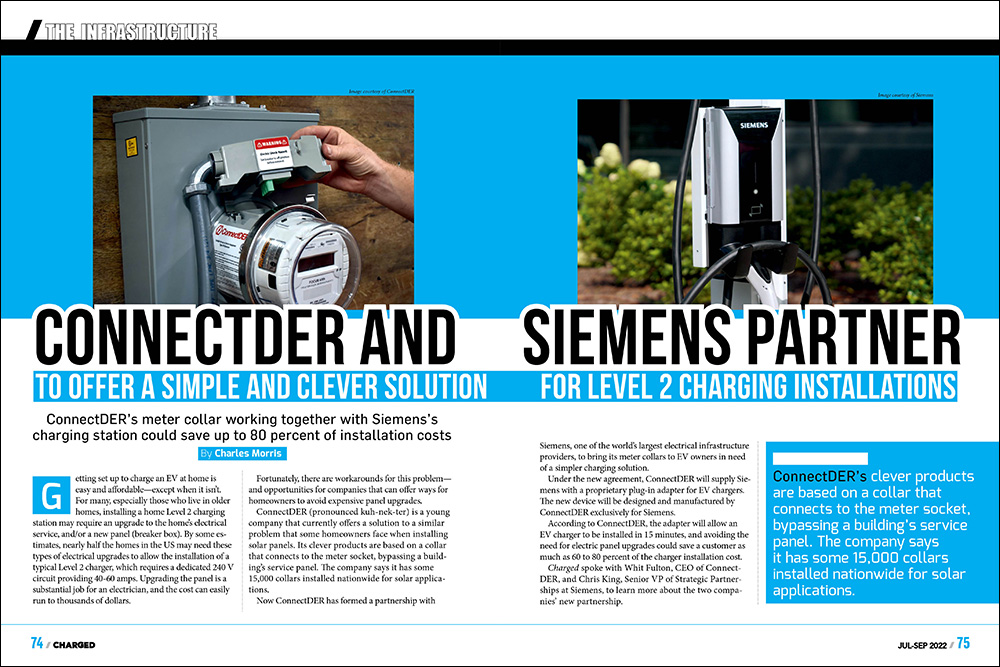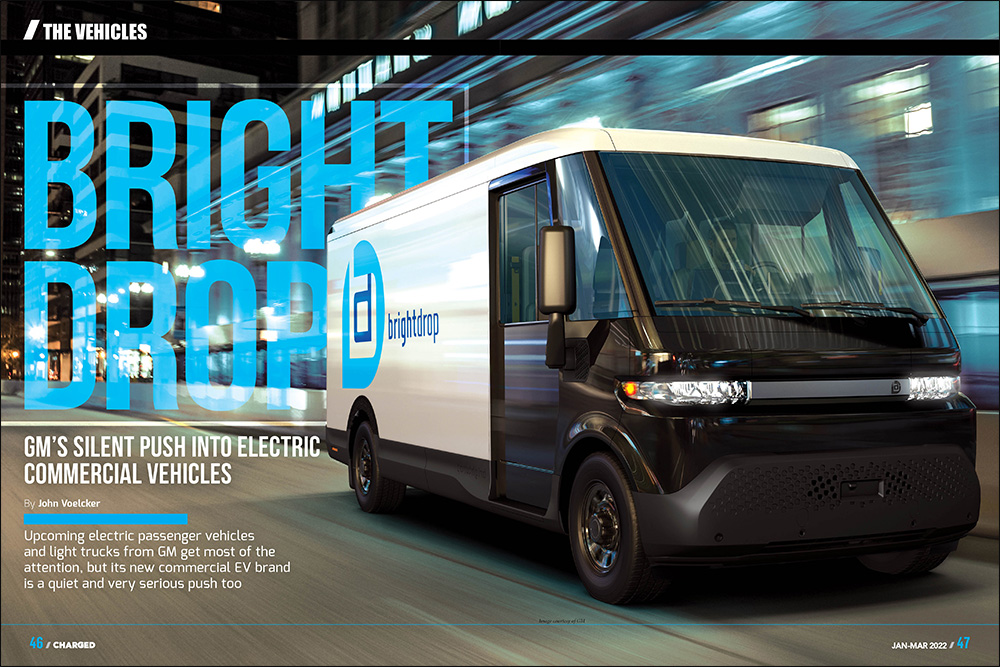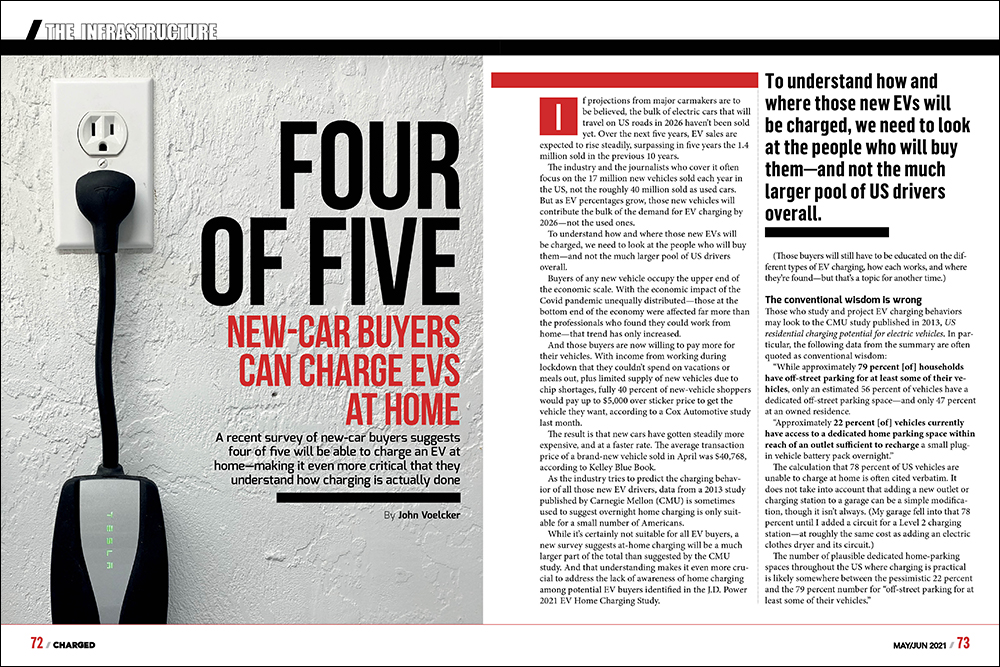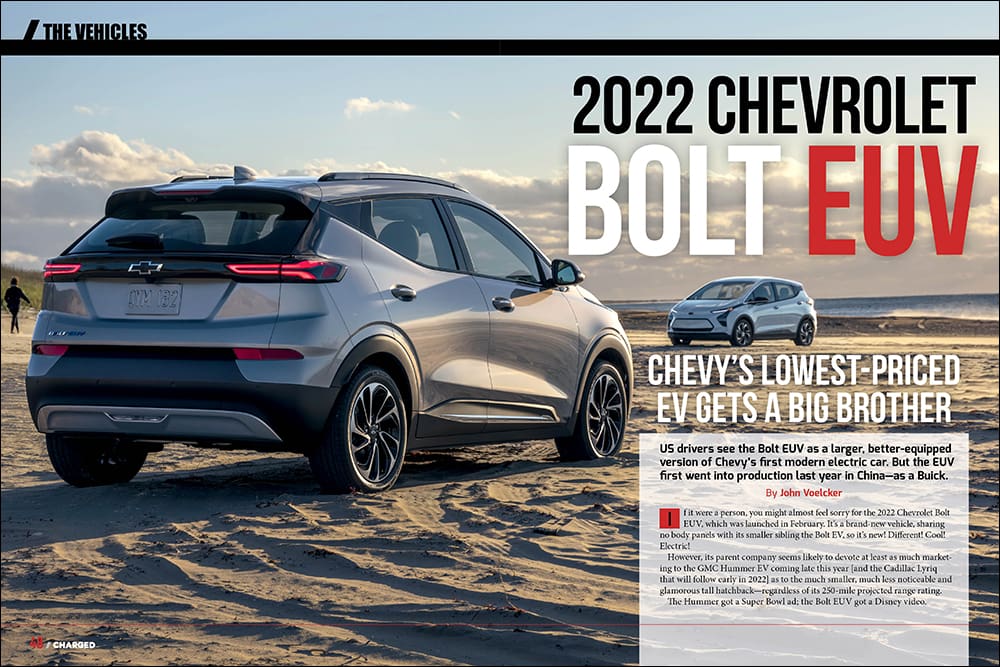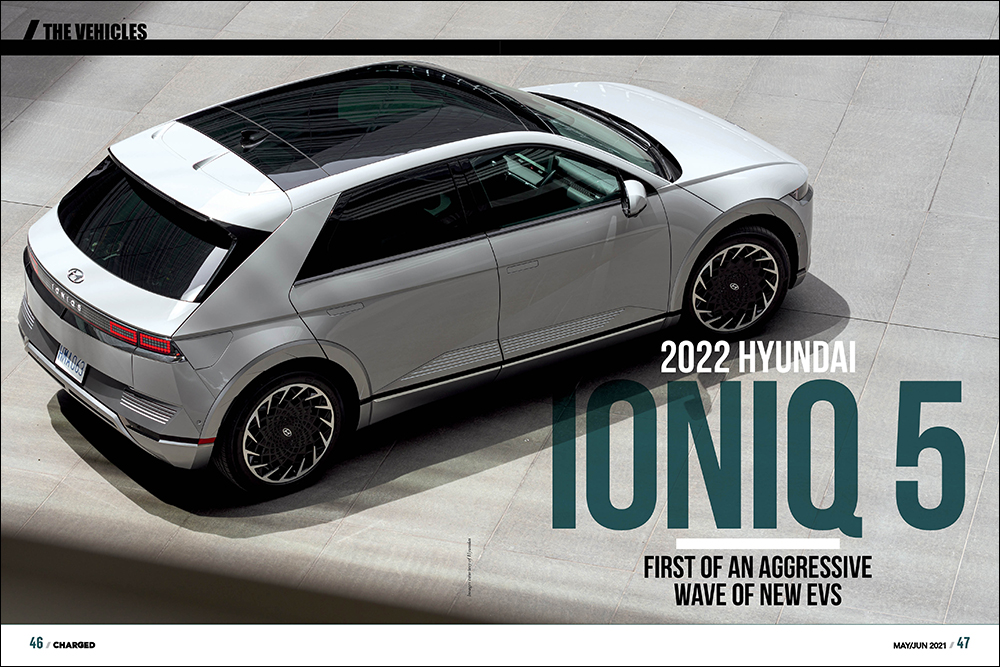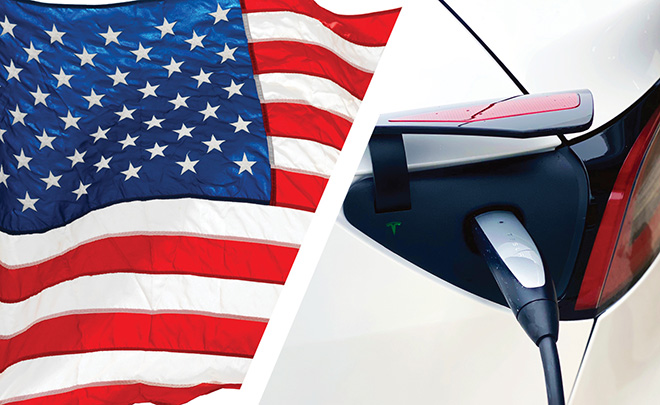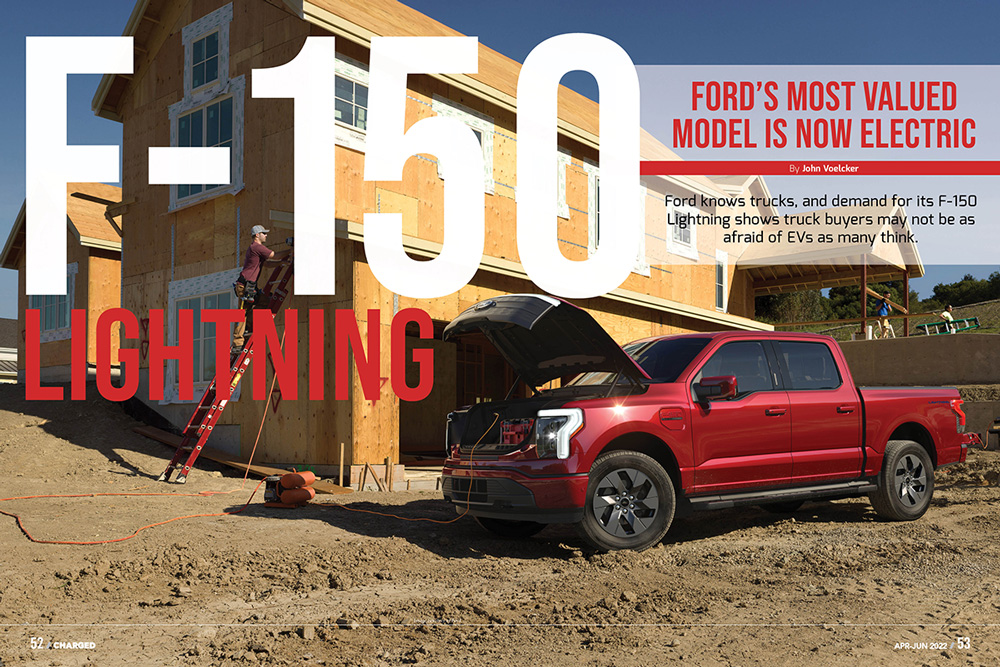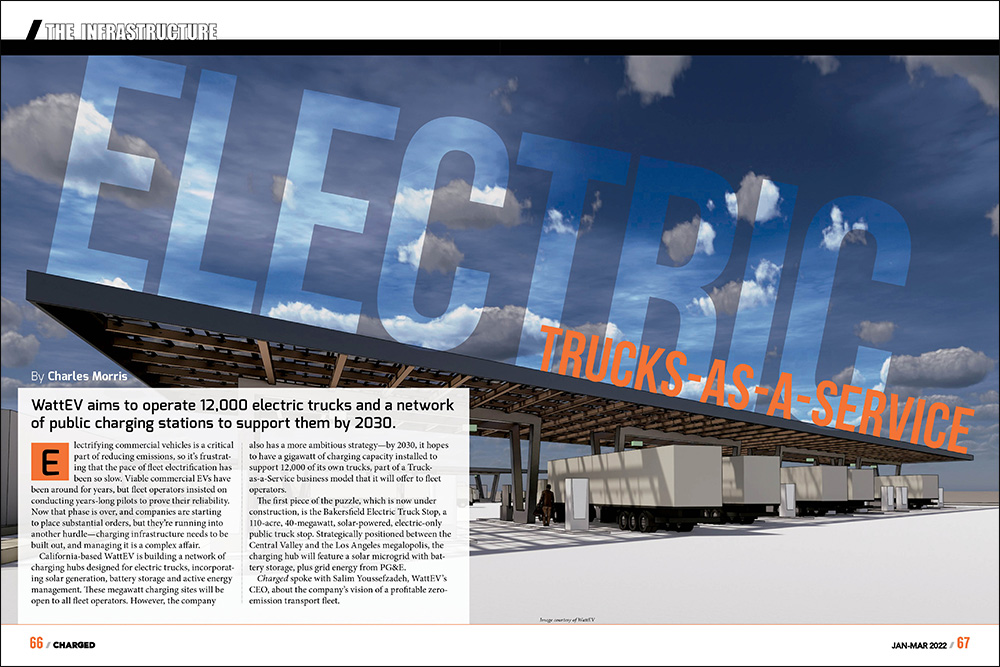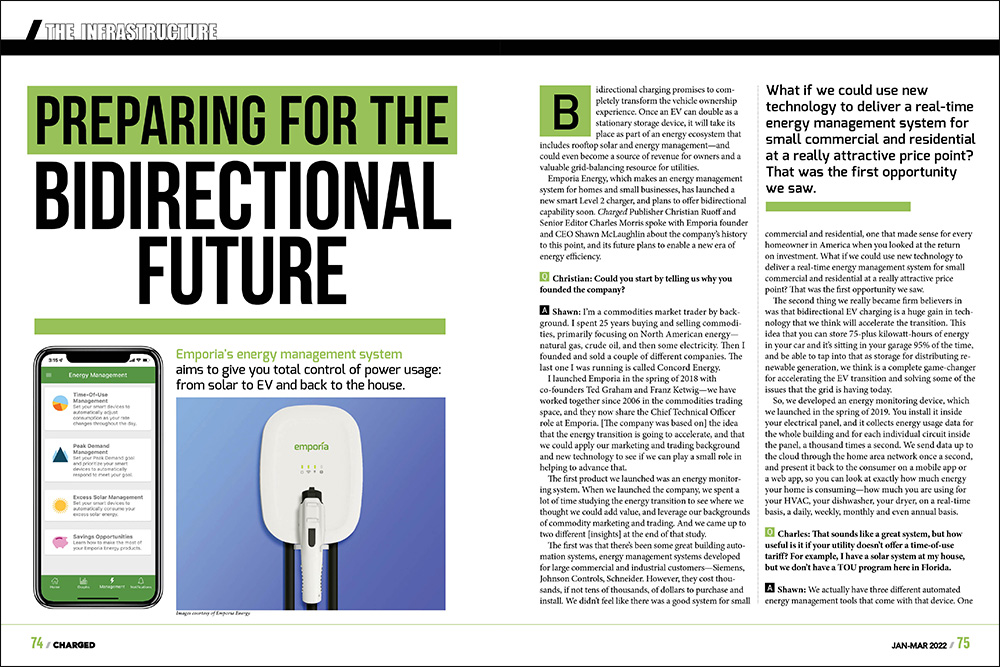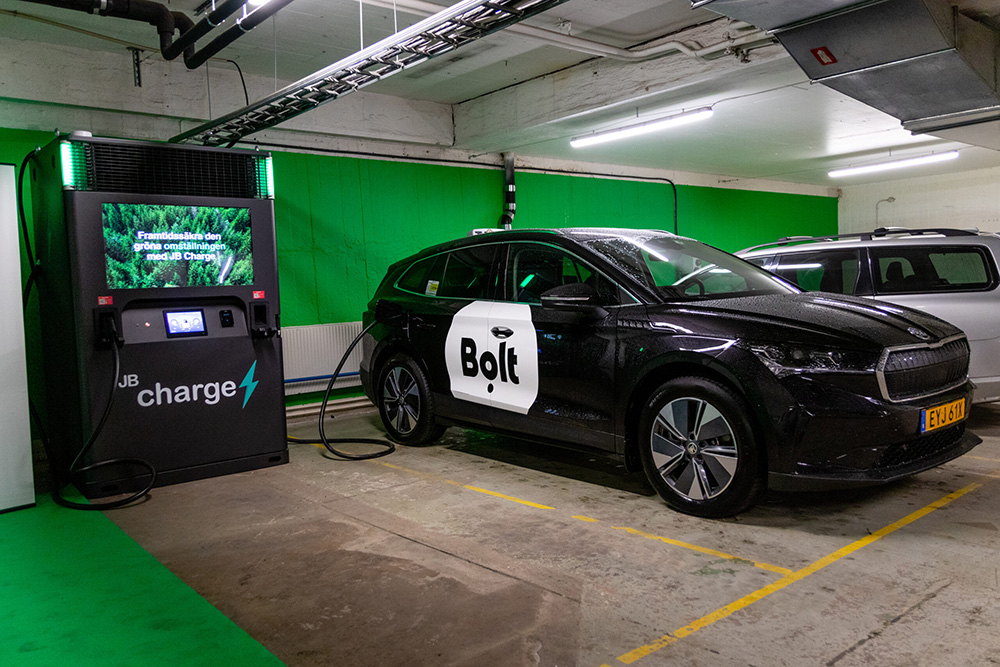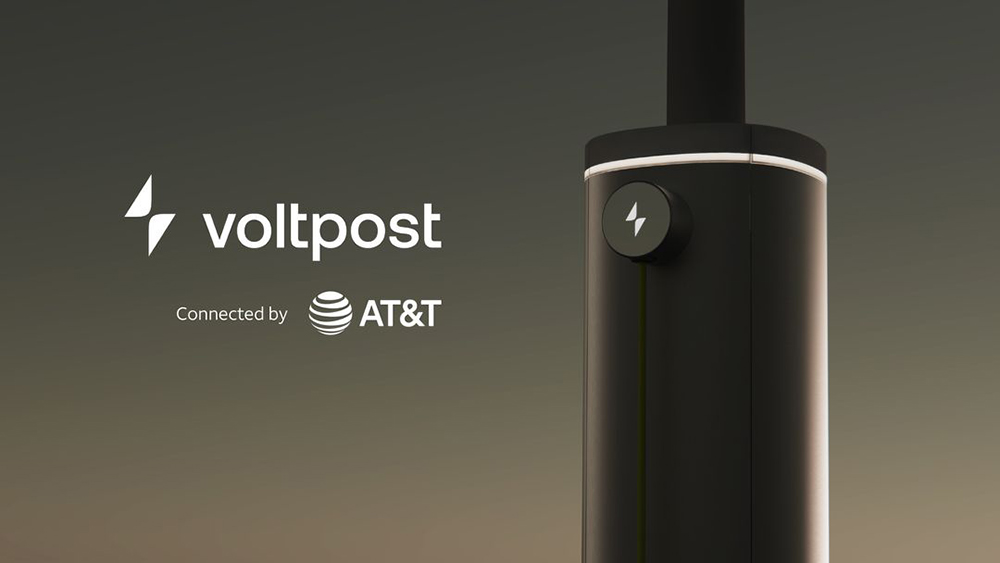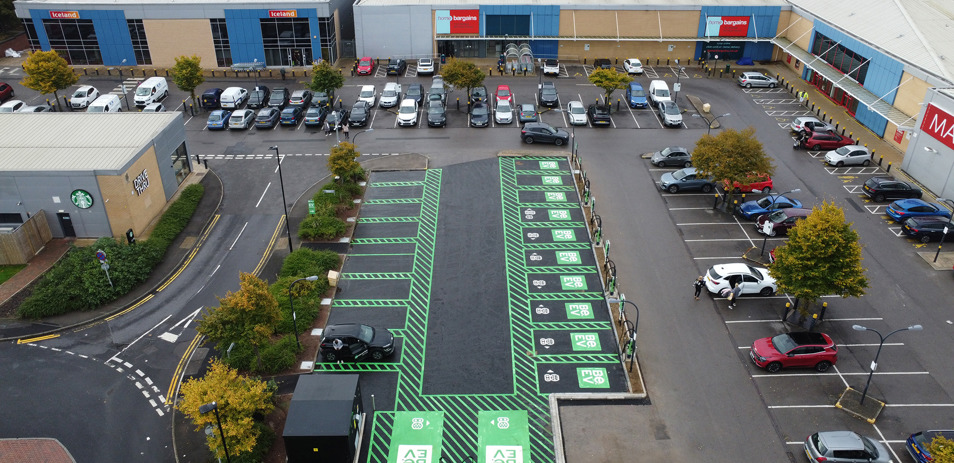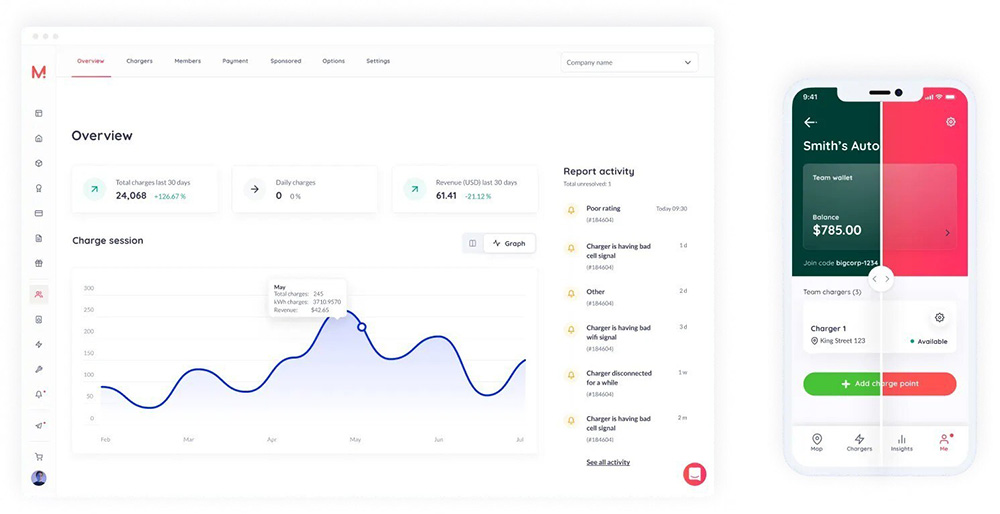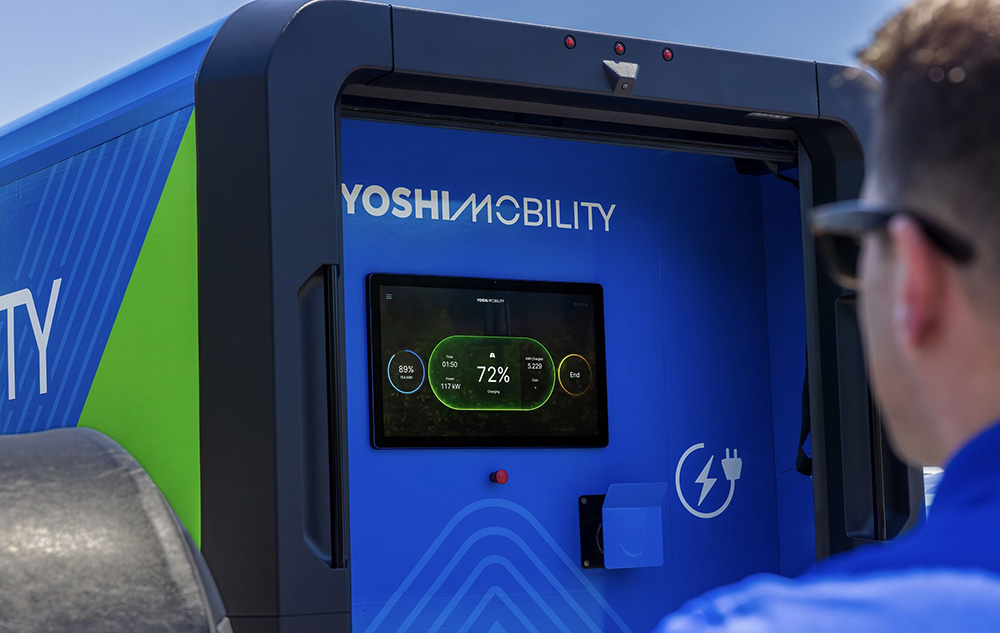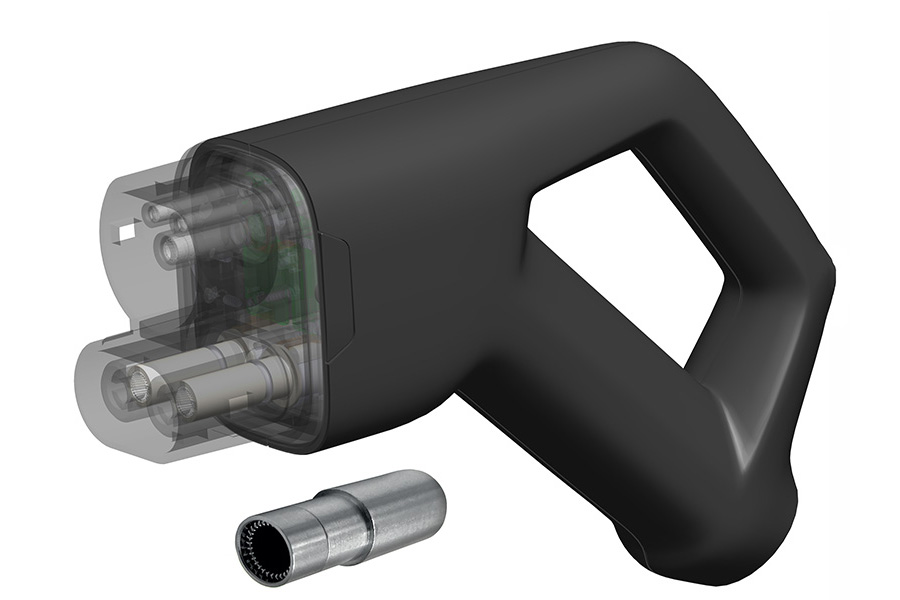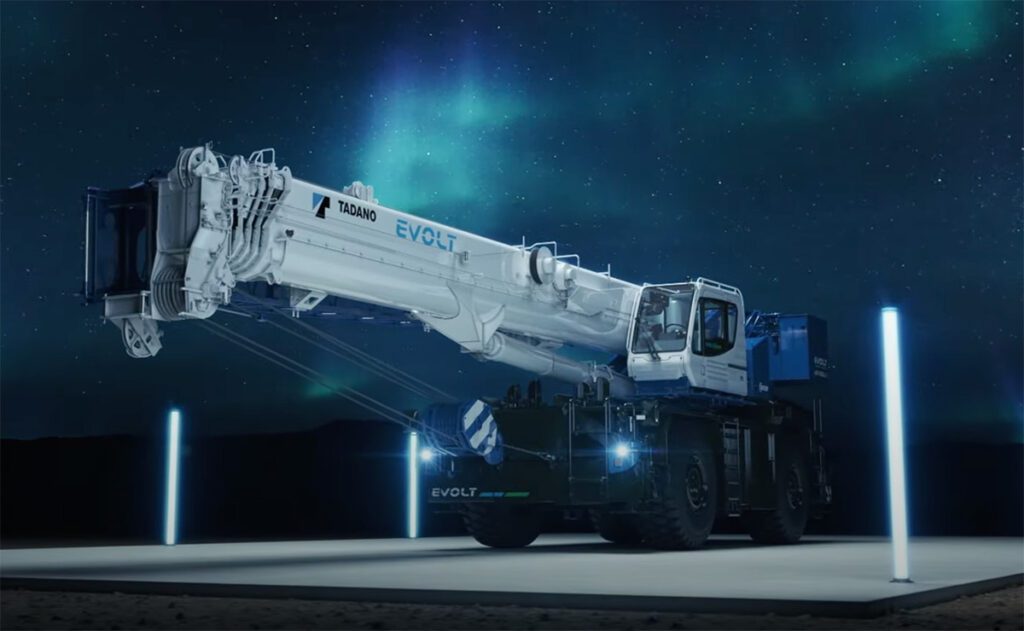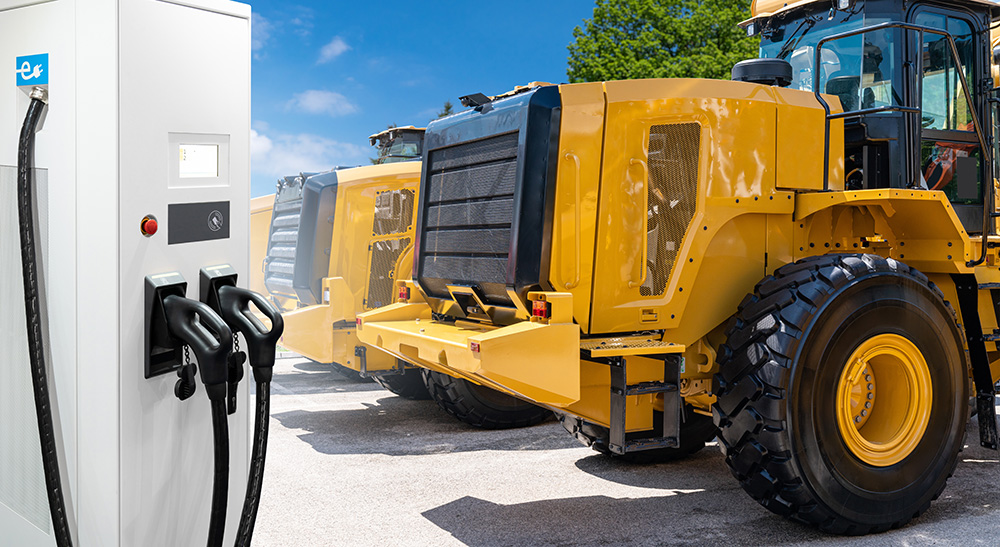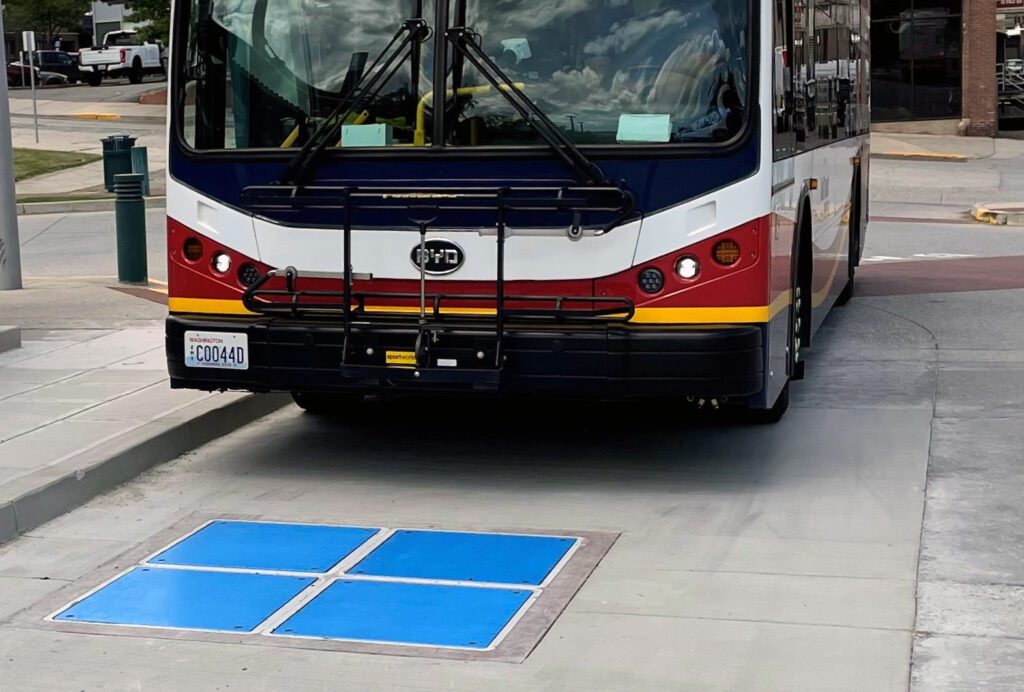In January 2014, the Alliance for Wireless Power announced Qualcomm Technologies Inc. as one of the first companies to earn Rezence certification, a technology and set of specifications endorsed by the world’s leading mobile chipmakers, mobile phone manufacturers and other key industry partners. With Qualcomm and other companies now certified, it is expected that Rezence-based wireless charging consumer electronics will be available this year.
Soon enough, all of the latest and greatest gadgets will come with standard wireless power capabilities. Charging your phone will be as simple as placing it on or above the wireless power transmitter built into your desk, your car’s center console or a variety of publicly-accessible charging points.
 Rezence demonstrates the future of smartphone charging, wireless receivers built into devices and transmitters built into vehicles
Rezence demonstrates the future of smartphone charging, wireless receivers built into devices and transmitters built into vehicles
In parallel with WiPower Technology for consumer electronics, Qualcomm has been developing its Halo Wireless Electric Vehicle Charging for battery-powered vehicles.
Charged caught up with Joe Barrett, Senior Director at Qualcomm Europe, to talk about the implications of Wireless Electric Vehicles Charging (WEVC – pronounced wev-see).
Charged: Many EV advocates tout the ease and simplicity of plugging in at home. So, why would we need Qualcomm Halo WEVC technology?
Joe Barrett: If we are going to inspire more people to buy EVs and create the demand for EV manufacturers to respond to, we have to appeal to what consumers today want. We need to seize this chance to win over the hearts and minds of the wireless generation.
A number of surveys over the past couple of years have shown strong consumer interest in and positive attitudes towards EVs. The positive sentiment towards EVs comes despite some of the barriers to adoption: the current high cost of most EVs, limited early-stage public infrastructure, and range anxiety.
WEVC would be a significant step towards easing these concerns and enhance the overall experience of owning an EV. Moving EV charging from a “plug in overnight” model to a charge wirelessly “little and often” model could potentially reduce the size of EV batteries. Once WEVC technology is broadly implemented at home, at work, in public locations, it will mean drivers simply look for a WEVC bay and park – the EV will then begin charging wirelessly automatically.
Also, because there are no cumbersome cables or charging posts, WEVC can be deployed almost anywhere, from parking bays to supermarkets, to garages and on city streets, and even one day at traffic lights and on our major roads and highways.

Charged: Do you think wirelessly charged phones and tablets will create more demand for WEVC technology?
Barrett: We are all using more and more wireless technologies. Consider the simple telephone. It has become untethered and has taken on a whole new genre as a personal connected part of who and what we are. Other devices are going the same way. You only have to look at consumers between 18 and 25 years of age, often referred to as the Millennial Generation or Generation Y, who have been brought up in the era of smartphones and internet-everywhere. Generation Y expects any technology to be simple, elegant and efficient, and they will become a significant part of the car-buying market; their requirements and tastes will shape the future of the automotive industry.
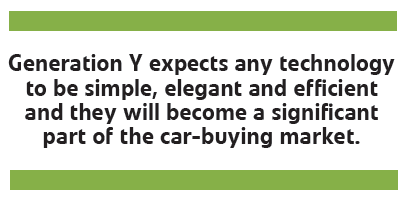
Charged: Are there fundamental differences between the technology used for wirelessly charged consumer electronics and EVs? Or is it simply scaled-up hardware?
Barrett: The fundamental principles behind all Wireless Power Transfer (WPT) solutions are the same – resonant magnetic induction, whether is it charging your electric toothbrush, your mobile device or your EV. The more power you are transferring or the greater the air gap between the charging pad and the receiving pad, the more sophisticated and complex the technology needs to be. WPT also has to be efficient, and in this respect the WPT efficiency of the Qualcomm Halo WEVC technology is greater than 90 percent from grid to the EV battery.
Complexity increases exponentially when you want to charge and move at the same time.
Charged: Are there technology hurdles that have to be cleared before we start to see OEMs include WEVC in automotive applications, or is it a question of standards and consumer demand?
Barrett: Wireless power is not a new phenomenon, even in transport. It is already used in factory automation and car assembly, for instance. Qualcomm Halo WEVC relies on developments and innovation in WEVC technology, which allow high power to be transferred over large air gaps and with high tolerance to misalignment. What this means in reality is that Qualcomm Halo WEVC systems will charge low- or high-ground-clearance EVs and still work even if drivers park their EV without precise alignment of the charging pads on the EV and the ground.
EVs are the logical solution to reducing emissions and improving the air quality in our cities, but there are hurdles – namely safety and interoperability. For WEVC to overcome these, drivers need to be confident that, if they park over a charging pad – be it at home, on the street or in a car park – the WEVC system will always work, no matter what the EV model or manufacturer.
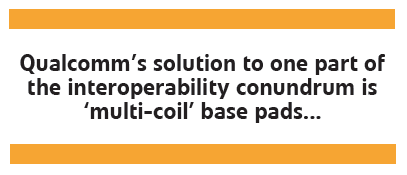
For EV manufacturers and infrastructure supply companies, this means interoperability is vital to ensure any WEVC system on any EV model can use any wireless charging point. Qualcomm’s solution to one part of the interoperability conundrum is multi-coil base pads, where the technology is compatible with the various single-coil or multi-coil charging pads that could be used on EVs. This will permit EVs to park in any charging bay and still be charged up. No one ever needs worry about finding a suitable wireless charging point. For governments working with developers of smart cities, Qualcomm believes choosing multi-coil technology base pads for WEVC offers a sensible approach.
Charged: Qualcomm was one of the first supporters of FIA’s Formula E Championship, beginning in September 2014. Many in the industry believe that the series will have an enormously positive impact on the perception of EVs. Qualcomm obviously agrees.
Barrett: Absolutely. Formula E is a tremendous platform for developing sustainable transportation and should help accelerate technology innovation that will filter down into many EVs. Another objective for the industry is to change cultural attitudes and dispel some of the stereotypes about what an EV might look like or be able to do. The new FIA Formula E Championship is a major part of this cultural change, and it is one of the reasons why Qualcomm became the Official Technology Partner. Formula E will feature cars powered exclusively by electric energy. With a capability of being able to do 0-100 km/h in three seconds and reach a (FIA rules mandated) maximum speed of 225 km, the cars and the championship itself will help demonstrate just what EVs are capable of.
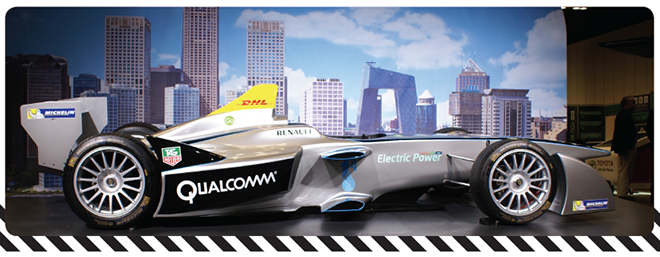
Charged: What is the role of WEVC in the series? Will we see wirelessly powered racecars someday?
Barrett: WEVC will play a major part in the championship. We announced in September 2013 that all safety cars will be charged wirelessly. Qualcomm Halo will be the exclusive WEVC technology for Formula E, and the WEVC system will be offered to the race cars from season two. Jarno Trulli’s TrulliGP team has said it will be working with Drayson Technologies LLP, a Qualcomm licensee, on WEVC for their Formula E racecars.
Qualcomm is also developing dynamic EV charging (DEVC) – charging on the move – with the potential to extend the race time and bring a new level of excitement to Formula E racing. Formula E will go a long way to promoting EVs and WEVC to a mass audience.
However, Qualcomm’s involvement with Formula E will extend beyond WEVC alone. Aside from showing off wireless charging, an objective of Formula E is to use other forms of mobile technology to enhance the experience for fans.
This article originally appeared in Charged Issue 14 – June/July 2014



